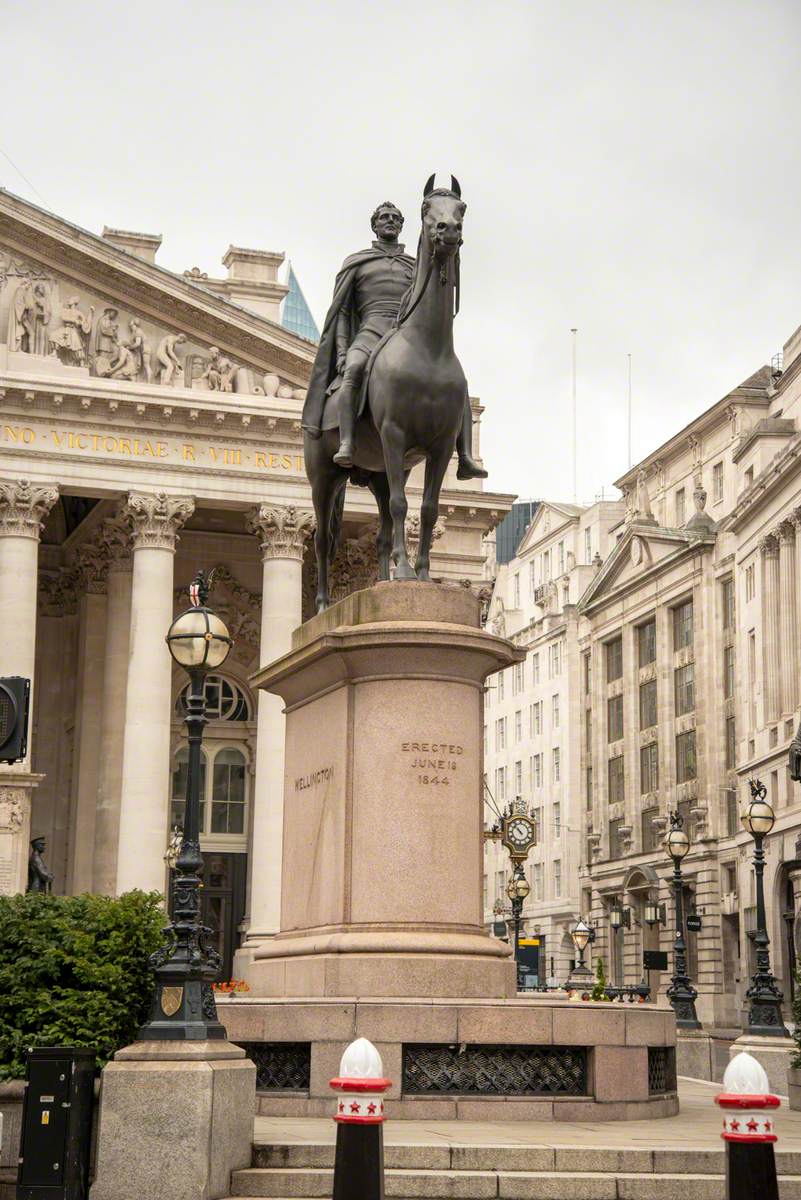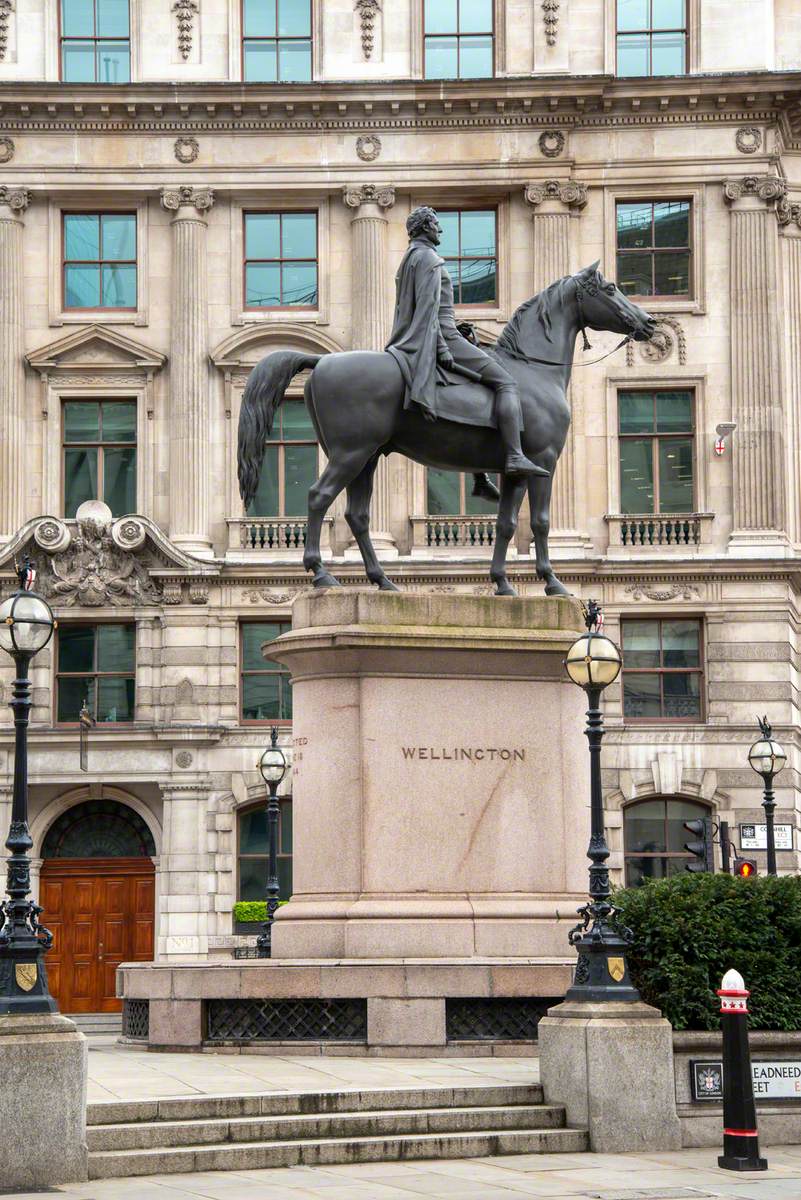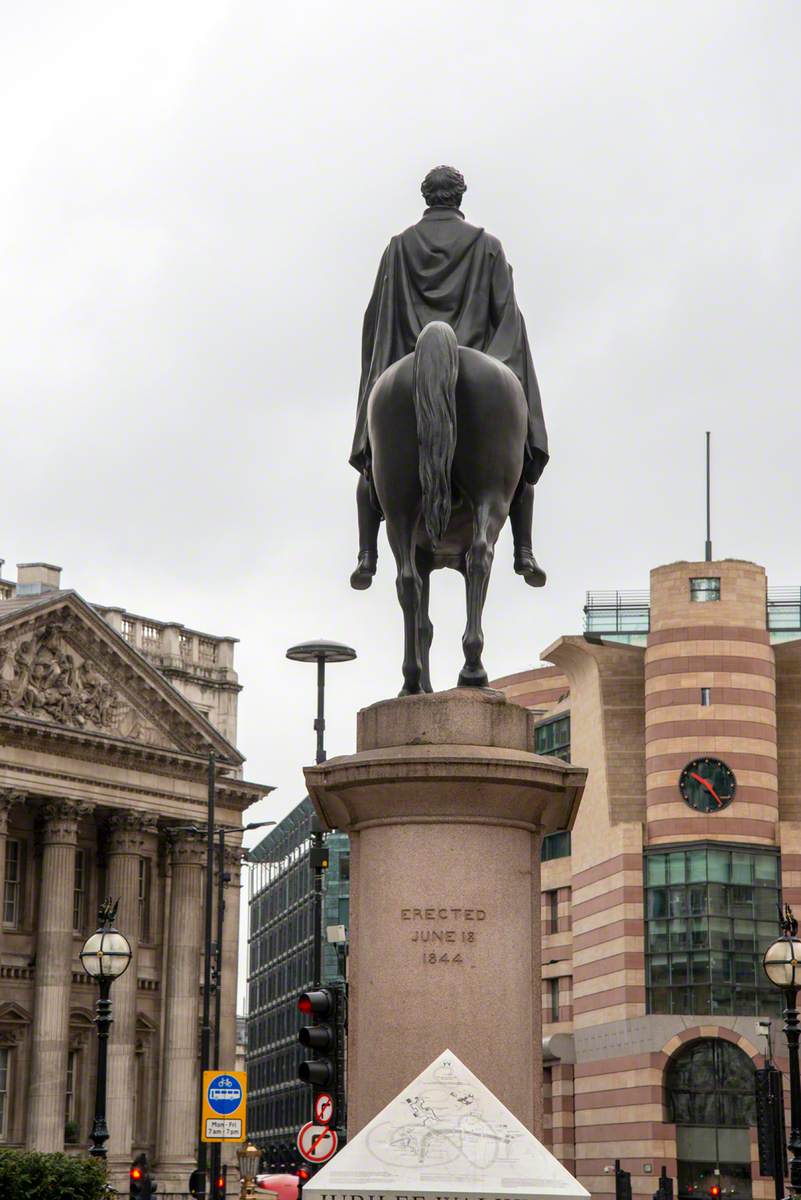How you can use this image
This image is available to be shared and re-used under the terms of the Creative Commons Attribution-NonCommercial licence (CC BY-NC).
This image can be reproduced in any way apart from any commercial uses.
Wherever you reproduce the image or an altered version of it, you must attribute the original creators (acknowledge the original artist(s), the person/organisation that took the photograph of the work) and any other stated rights holders.
Review our guidance pages which explain how you can reuse images, how to credit an image and how to find more images in the public domain or with a Creative Commons licence available.
DownloadNotes
Add or edit a note on this artwork that only you can see. You can find notes again by going to the ‘Notes’ section of your account.
Title
Duke of Wellington (1769–1852)
Date
1837–1844
Medium
bronze & grey granite
Accession number
EC4_MRF_S010_1
Acquisition method
purchased by public subscription
Work type
Equestrian
Owner
City of London Corporation
Custodian
City of London Corporation
Work status
extant
Listing status
Grade II (England and Wales)
Unveiling date
18th June 1844
Listing date
05/06/72
Access
at all times
Inscription description
inscribed on each side of the plinth: WELLINGTON; on the front, and the back of the plinth: ERECTED / JUNE 18 / 1844; a metal plaque at the plinth's base reads: ON 19TH JULY 1838, THE COURT OF COMMON COUNCIL OF THE CITY OF LONDON AGREED / TO A CONTRIBUTION OF £500 TOWARD THE COST OF THE ABOVE STATUE OF THE DUKE / OF WELLINGTON IN APPRECIATION OF HIS EFFORTS IN ASSISTING THE PASSAGE OF / THE LONDON BRIDGE APPROACHES ACT 1827. THIS ACT LED TO THE CREATION OF KING / WILLIAM STREET. THE GOVERNMENT DONATED THE METAL, WHICH IS BRONZE FROM CAPTURED / ENEMY CANNON MELTED DOWN AFTER THE BATTLE OF WATERLOO, AND VALUED AT THE / TIME AT £1500. THE TOTAL COST OF THE STATUE WAS £9000. THE REMAINDER BEING / RAISED BY PUBLIC SUBSCRIPTION. / THE SCULPTOR, SIR FRANCIS CHANTREY (1781 TO 1841), WAS COMMISSIONED IN 1838 / BUT DIED BEFORE THE WORK WAS COMPLETED. IT WAS FINISHED BY HIS ASSISTANT HENRY WEEKS (1807 TO 1877). / THE LORD MAYOR, WILLIAM MAGNAY, UNVEILED THE STATUE ON 18TH JUNE 1844, THE / ANNIVERSARY OF WATERLOO, IN THE PRESENCE OF HIS GUEST THE KING OF SAXONY. / ADJOINING THE STATUE, A PIECE OF GRANITE FROM LONDON BRIDGE (1825 TO 1967) / HAS BEEN SET INTO THE PAVEMENT BY THE CORPORATION OF LONDON. THE ELEVATIONAL / STONEWORK FROM THE SAME BRIDGE WAS RE-ERECTED OVER THE COLORADO RIVER IN LAKE HAVASU CITY, ARIZONA, U.S.A. IN 1971













